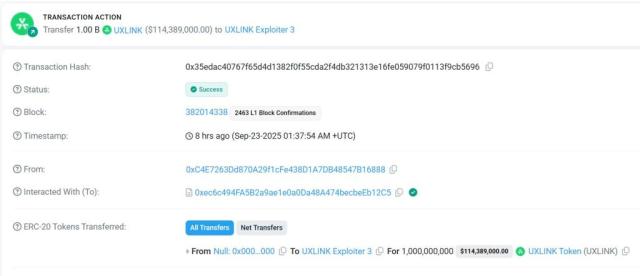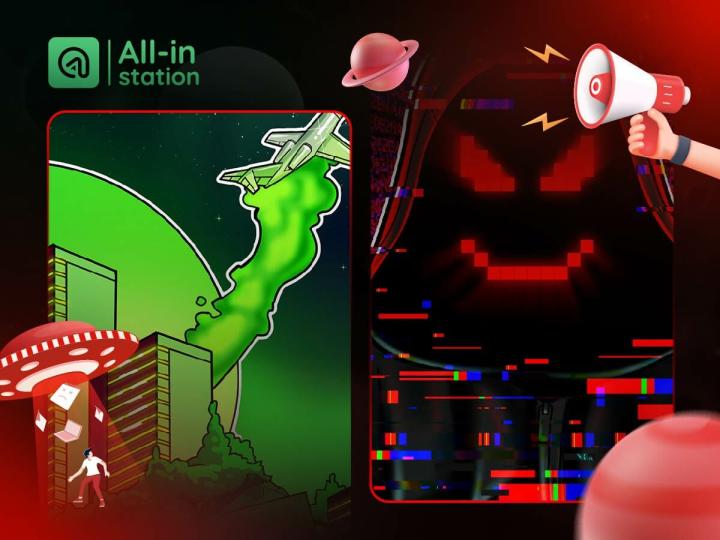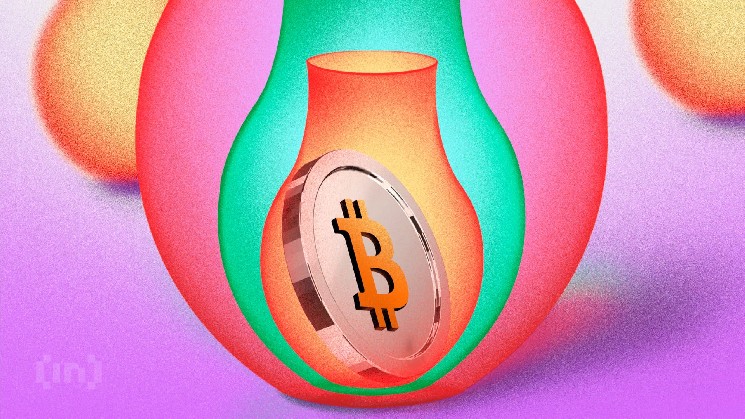By AltSeason CoPilot
Compiled by: Vernacular Blockchain

I saw two seemingly independent trends about to collide, potentially unlocking $500 billion in illiquid assets, unnoticed by most investors. Digging deeper into the data, I realized we were witnessing not just incremental innovation but the birth of an entirely new financial system.
The clues had been obvious for a long time, but it wasn't until I connected them that I realized the scale of what was about to happen.
The combination of artificial intelligence and cryptocurrency has created something unprecedented.
A model that changes everything
One data point made me realize we’re at a turning point: in June 2025, tokenized real-world assets reached $24 billion, a 380% increase from 2022.
But that’s not the revolutionary part.
What’s truly revolutionary is what happens when AI algorithms begin to autonomously manage these tokenized assets.
☛ Consider the following scenario:
For the first time in history, we can have AI systems that not only analyze the market but can also directly own, trade, and manage real-world assets through blockchain tokens. We are talking about AI with actual economic initiative.
Most people think of AI and tokenization as separate trends. In reality, they are two parts of the same revolution.
The Trillion-Dollar Math No One Talks About
While everyone is paying attention to the price fluctuations of cryptocurrencies, a bigger change is happening behind the scenes.
Traditional asset management:
- Real estate: $280 billion globally, mostly illiquid
- Bonds and credit: $130 billion, controlled by institutions
- Art and collectibles: $2 billion, completely illiquid
- Total: $412 billion trapped in legacy systems
Artificial Intelligence + Tokenization Potential:
- Split ownership of all assets
- 24/7 algorithm management
- Instant global liquidity
- Result: The creation of a multi-trillion dollar market that didn't exist before
This number is shocking.
Even if only 10% of traditional assets were tokenized and managed by AI, we would see a new market exceeding $400 billion.
That's larger than the entire U.S. stock market.
Three forces creating the perfect storm
What makes this moment unprecedented is not just technological advancement, but the confluence of three forces that have never been aligned.
➢ Force 1: The awakening of artificial intelligence
- What you see: smarter trading bots and better market analysis.
- What actually happened: AI systems are able to execute complex financial strategies across multiple asset classes simultaneously. The AI token sector grew 11% in a week to $33.9 billion, with daily trading volume up 120%.
- Hidden truth: These are no longer just tools. They are becoming autonomous financial agents that can make decisions, execute trades, and manage portfolios without human intervention.
➢ Force 2: Tokenization explosion
- What you see: a digital representation of a physical asset.
- What’s actually happening: A complete reconstruction of ownership. When BlackRock launched a tokenized Treasury bond fund and Franklin Templeton created a blockchain-based bond product, traditional finance was acknowledging that tokenization is the future.
- The hidden truth: Any asset that can be tokenized will be tokenized. Real estate, intellectual property, carbon credits, future income streams—everything becomes programmable and liquid.
➢ Force 3: Regulatory shift
- What you see: The Trump administration’s pro-crypto policies.
- What actually happened: The regulatory barriers that kept institutional funds on the sidelines were removed. When the compliance framework became clear, trillions of dollars of institutional capital could finally enter the tokenized market.
- This isn’t just cryptocurrency adoption. It’s the full migration of global finance to a blockchain-based system.
An industry that will never recover
I’ve been modeling which traditional financial industries face existential threats, and the timeline is shorter than anyone imagined.
➤ Real estate (already disrupting)
- The old way: Buy a $2 million property, manage it yourself, and sell it when you need liquidity.
- New way: Own fractional ownership of 100 properties through tokens, earn automated rental income, and trade 24/7 through an AI-managed protocol.
- Real estate becomes as liquid as stocks. Geographical restrictions disappear. Barriers to entry crumble. Traditional real estate investing becomes obsolete.
➤ Asset management (next 12 months)
- The old way: pay 1-2% fees for human portfolio management, limited options, and slow execution.
- New approach: AI algorithms manage a diverse tokenized portfolio across all asset classes, continuously rebalancing, with near-zero fees.
- Traditional asset managers cannot compete with AI that never sleeps, has no emotional bias, and has instant access to the global tokenized market.
➤ Banking services (12-24 months)
- The old way: Banks act as intermediaries for lending, payments, and asset storage.
- New approach: Smart contracts automatically match borrowers and lenders, using tokenized assets as collateral. AI assesses risk and manages terms.
- Banks become unnecessary intermediaries in a system designed to eliminate intermediaries.
Reshaping the financial landscape
➝ Scenario 1: Gradual integration
- Setting: Traditional institutions slowly adopt tokenization while retaining existing structures.
- Problem: This assumes they can compete with native AI tokenization platforms. History shows that incumbents who try to juggle old and new systems often fail on both ends.
Scenario 2: Market differentiation
- Setting: Traditional and tokenized systems coexist, serving different markets.
- Reality: When tokenized assets offer better liquidity, lower costs, and 24/7 access, traditional markets will become a shrinking market serving those who prefer complexity and high fees.
Scenario 3: System replacement (most likely)
- Setting: Tokenization of AI management reaches a critical mass, clearly outperforming most use cases.
- The result: a massive migration that happened quickly. Traditional financial institutions faced the same disruption that the newspaper, retail, and taxi industries experienced. The difference was the scale—this was the entire global financial system.
Warning signs that went unheeded
The following leads me to believe we are closer to scenario 3 than most people think:
- The infrastructure is already built: Ethereum already holds $7.5 billion in tokenized real-world assets. The protocol exists. The legal framework is emerging. Institutional adoption is accelerating.
- The performance gap is widening: Tokenized bonds and credit are already achieving returns of 8-10% through programmable automation. Traditional alternatives cannot match this efficiency.
- Regulatory barriers are falling: With the emergence of clear compliance frameworks, the last excuse for institutions to hesitate is disappearing.
⦿The Privacy Paradox No One Has Solved⦿
What worries me is this: AI-driven identity verification and automated compliance create unprecedented surveillance capabilities.
When AI systems can track every tokenized asset transaction, verify every identity, and predict every market dynamic, we trade privacy for efficiency. The same system that makes markets more liquid also makes individuals more transparent.
Most investors focus on the opportunities and ignore the impact. When your entire financial life exists on the blockchain and is managed by AI, whoever controls the AI controls your financial future.
The choices that will define the next decade
Remember that $500 billion I mentioned at the beginning? That’s not theoretical—that’s mathematical.
When AI can manage tokenized versions of every major asset class with greater efficiency and lower cost, value has to flow somewhere. It will flow from traditional financial intermediaries to networks that provide services that people actually use.
If you hold traditional financial assets as this transformation accelerates, you are fighting the most powerful technological convergence since the internet.
If you are targeting the AI tokenization ecosystem, you are betting on a system that has already demonstrated superior performance, efficiency, and accessibility.
The data shows that one location is significantly safer than the other.
But there’s a deeper question: In a world where AI autonomously manages tokenized assets, what role will humans play in their own financial future?
The answer to this question will determine not only the return on investment but also the nature of the economic initiative.
The convergence of AI and tokenization isn't just creating new investment opportunities—it's fundamentally reshaping the entire financial system. Traditional institutions face the choice of adapting to AI-managed tokenized markets or becoming irrelevant. The scale of the potential wealth transfer makes this the most important financial trend of the next decade, but the implications for privacy and autonomy may be even more significant than the economics.
Link to this article: https://www.hellobtc.com/kp/du/09/6047.html
Source: https://digitalcurrencytraders.com/why-ai-tokenization-could-trigger-the-biggest-financial-revolution-since-banking-a7472de331bc






